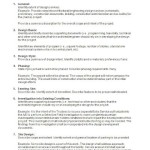Interior Design and Architecture: A Collaborative Dance
Interior design and architecture, while often perceived as separate disciplines, are intricately intertwined, forming a harmonious collaboration that shapes the spaces we inhabit. Both disciplines share a common goal: to create functional, aesthetically pleasing, and culturally relevant environments. However, their approaches and areas of focus diverge, leading to a dynamic exchange of ideas and expertise. This article explores the relationship between interior design and architecture, highlighting their distinct roles and the synergistic benefits of their collaborative nature.
The Architect’s Vision: Structure and Function
Architecture, at its core, focuses on the construction and form of buildings. Architects are responsible for developing the structural integrity, functionality, and overall design of a space. They consider factors such as site analysis, building codes, and environmental sustainability to create safe, durable, and adaptable structures. Architects often work with clients to understand their needs and translate those needs into a cohesive architectural language. They define the building's envelope, including its size, shape, and layout, laying the foundation for the interior design process.
The Interior Designer’s Touch: Aesthetics and Experience
Interior designers take the architect's blueprint as their starting point and infuse the space with personality and functionality. They focus on the aesthetic elements that create a cohesive and engaging environment. This involves selecting furniture, lighting, color palettes, finishes, and textiles to enhance the overall design. Interior designers consider the flow of movement, the relationship between different areas within the building, and the impact of light and sound. Their goal is to create spaces that meet the functional requirements of the users while fostering a positive emotional response.
The Power of Collaboration: Building a Holistic Experience
The most successful interior design and architecture projects emerge from a collaborative approach. Architects and interior designers working in tandem bring a comprehensive understanding of the space, ensuring that the interior design seamlessly integrates with the building's structure and function. This collaboration fosters a holistic approach, where every design decision is made with the user's experience in mind. For example, the architect might design a space with large windows to maximize natural light, while the interior designer might choose furniture and colors that complement the existing structure and enhance the light flow.
Beyond Functionality: Sustainable Design
Both interior design and architecture are increasingly incorporating sustainable design principles into their practice. Architects are designing buildings with energy-efficient materials and systems, minimizing their environmental footprint. Interior designers are selecting furniture made from sustainable materials, utilizing reusable and recyclable elements, and promoting healthy indoor air quality. By collaborating on sustainable solutions, architects and interior designers contribute to a more environmentally conscious built environment.
The Evolving Relationship
The relationship between interior design and architecture is constantly evolving. Technological advancements, changing user preferences, and a growing focus on sustainability are shaping the way these disciplines approach design. As technology plays an increasingly vital role in the design process, architects and interior designers are leveraging digital modeling, virtual reality, and data analysis to create innovative and personalized spaces. The dynamic exchange of ideas and expertise between these two disciplines ensures a continuous evolution of the built environment, making spaces more functional, beautiful, and sustainable for future generations.

Should I Study Interior Design Or Architecture The Architects Diary

Interior Design Vs Architecture What S The Difference

Interior Design Vs Architecture What S The Difference

What Is A Good Interior Design Archdaily

Interior Design Woodbury University

The Difference Between Architecture Vs Interior Design Foyr

What Is The Difference Between An Architect Amp Interior Designer

What Are The Differences Between An Interior Architect Designer And Decorator Walk Id

How To Get The Most Out Of Maximalism Archdaily

7 Elements And Principles Of Interior Design Basic Concepts Foyr








